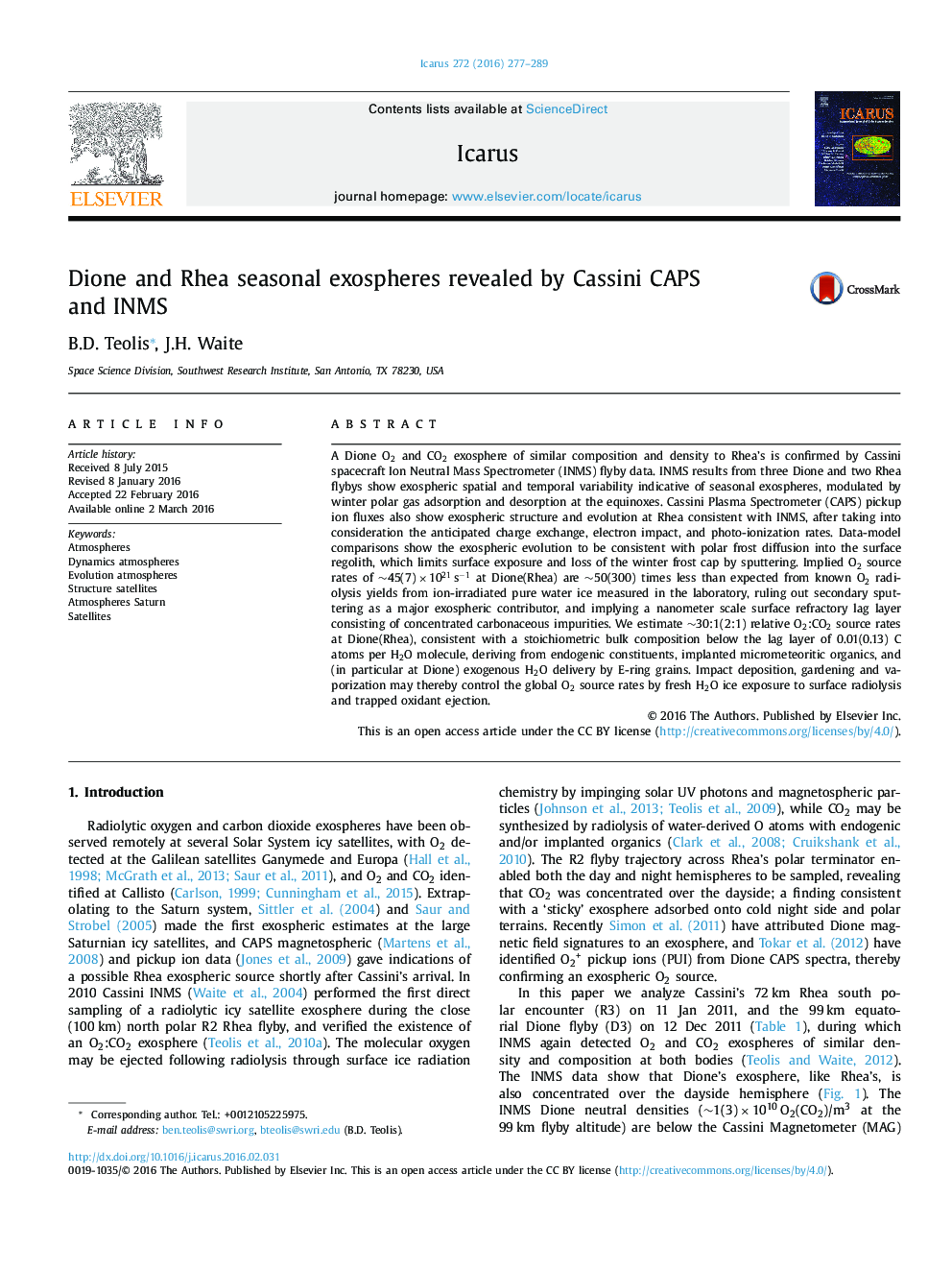| Article ID | Journal | Published Year | Pages | File Type |
|---|---|---|---|---|
| 8135311 | Icarus | 2016 | 13 Pages |
Abstract
A Dione O2 and CO2 exosphere of similar composition and density to Rhea's is confirmed by Cassini spacecraft Ion Neutral Mass Spectrometer (INMS) flyby data. INMS results from three Dione and two Rhea flybys show exospheric spatial and temporal variability indicative of seasonal exospheres, modulated by winter polar gas adsorption and desorption at the equinoxes. Cassini Plasma Spectrometer (CAPS) pickup ion fluxes also show exospheric structure and evolution at Rhea consistent with INMS, after taking into consideration the anticipated charge exchange, electron impact, and photo-ionization rates. Data-model comparisons show the exospheric evolution to be consistent with polar frost diffusion into the surface regolith, which limits surface exposure and loss of the winter frost cap by sputtering. Implied O2 source rates of â¼45(7)Â ÃÂ 1021Â sâ1 at Dione(Rhea) are â¼50(300) times less than expected from known O2 radiolysis yields from ion-irradiated pure water ice measured in the laboratory, ruling out secondary sputtering as a major exospheric contributor, and implying a nanometer scale surface refractory lag layer consisting of concentrated carbonaceous impurities. We estimate â¼30:1(2:1) relative O2:CO2 source rates at Dione(Rhea), consistent with a stoichiometric bulk composition below the lag layer of 0.01(0.13) C atoms per H2O molecule, deriving from endogenic constituents, implanted micrometeoritic organics, and (in particular at Dione) exogenous H2O delivery by E-ring grains. Impact deposition, gardening and vaporization may thereby control the global O2 source rates by fresh H2O ice exposure to surface radiolysis and trapped oxidant ejection.
Keywords
Related Topics
Physical Sciences and Engineering
Earth and Planetary Sciences
Space and Planetary Science
Authors
B.D. Teolis, J.H. Waite,
